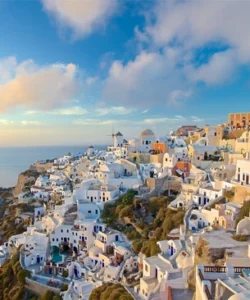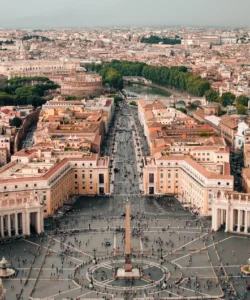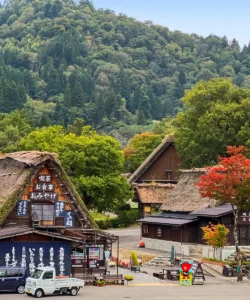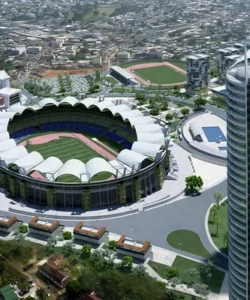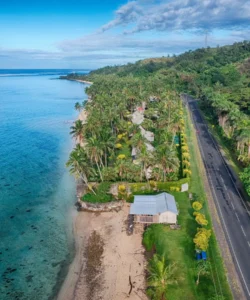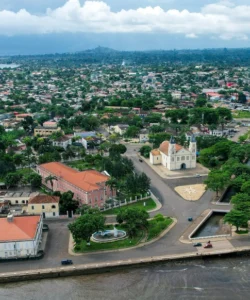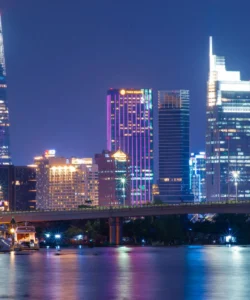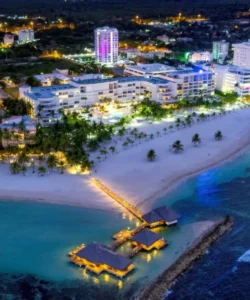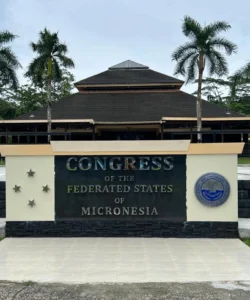Kosovo, officially the Republic of Kosovo, is a partially recognized state and disputed territory in Southeast Europe. Located in the central Balkan Peninsula, it declared independence from Serbia in 2008. It is characterized by its mountainous terrain, vibrant culture, and a history marked by both Ottoman and Yugoslav influences, as well as a more recent struggle for recognition.
![]()
Area and Population:
Kosovo covers an area of approximately 10,887 km² (4,203 sq mi). As of early 2025, its population is estimated to be around 1.7 to 1.8 million.
Capital:
The capital city of Kosovo is Pristina (Prishtina).
Major Cities:
Besides Pristina, other significant cities and towns include Prizren, Peć (Peja), Mitrovica, and Gjakova.
Language:
Kosovo has two official languages:
- Albanian: Spoken by the majority (primarily Kosovo Albanians).
- Serbian: Spoken by the Serbian minority.
Other minority languages like Turkish and Romani are also recognized in some municipalities. English is increasingly understood and spoken, especially among younger generations and in urban areas.
Currency:
Kosovo uses the Euro (€) as its de facto currency, despite not being a member of the Eurozone or the European Union.
Religion:
The dominant religion in Kosovo is Islam, primarily among the Albanian majority, a legacy of centuries of Ottoman rule. There is also a significant community of Orthodox Christians (predominantly among the Serbian minority) and a smaller number of Roman Catholics.
Attractions and Wonders:
- Pristina’s Newborn Monument: An iconic modern sculpture unveiled on the day of Kosovo’s independence, repainted annually with different themes, symbolizing new beginnings.
- National Library of Kosovo, Pristina: Known for its unusual and controversial architecture, often described as a mix of cubes and domes with a metal fishing net covering.
- Cathedral of Saint Mother Teresa, Pristina: A striking and relatively new Roman Catholic cathedral, one of the tallest buildings in Pristina, offering panoramic views from its bell tower.
- Fatih Mosque (Imperial Mosque), Pristina: A historic Ottoman mosque from the 15th century.
- Gračanica Monastery, near Pristina: A UNESCO World Heritage site, this beautiful Serbian Orthodox monastery dates back to the 14th century, known for its well-preserved frescoes.
- Prizren’s Old Town: Often considered Kosovo’s most picturesque city, with its Ottoman-era Old Bridge, Sinan Pasha Mosque, and the Church of Our Lady of Ljeviš (a UNESCO site, though currently in disrepair).
- Prizren Fortress (Kaljaja Fortress): Perched above the city, offering panoramic views of Prizren and the surrounding mountains.
- Rugova Canyon, near Peć (Peja): A spectacular canyon in the Prokletije Mountains (Albanian Alps), offering hiking, climbing, and scenic drives.
- Patriarchate of Peć Monastery: Another UNESCO World Heritage site, a complex of medieval Serbian Orthodox churches and a spiritual center.
- Visoki Dečani Monastery: A grand 14th-century Serbian Orthodox monastery, also a UNESCO World Heritage site, known for its extensive fresco cycles.
- Mirusha Waterfalls, near Malisheva: A series of beautiful waterfalls and lakes, popular for swimming in summer.
- Gadime Cave (Marble Cave): A fascinating natural cave system known for its unique marble formations.
Architecture:
Kosovo’s architecture is a fusion of its various historical periods and cultures:
- Ottoman: Predominant in older urban centers like Prizren, featuring stone bridges, mosques, hammams (bathhouses), and traditional residential houses (e.g., the Albanian kulla, a fortified stone tower house).
- Serbian Medieval: Represented by the magnificent Serbian Orthodox monasteries (Gračanica, Peć, Dečani), characterized by their unique architectural styles, often with fresco-covered interiors.
- Austro-Hungarian: Less pervasive than in Bosnia, but some buildings in urban centers show this influence.
- Yugoslav Modernism/Socialist Realism: Functional and often stark concrete structures from the Yugoslav era, particularly in Pristina, including apartment blocks and public buildings.
- Post-Conflict Reconstruction and Contemporary: A mix of new, often rapidly built, residential and commercial structures, alongside more thoughtfully designed contemporary public buildings. There’s a growing modern aesthetic, especially in Pristina.
Roads:
Kosovo’s road infrastructure has significantly improved since the early 2000s, with major investments in motorways and arterial roads.
- Motorways (Autostrada – R-roads): Kosovo has developed a modern motorway network. The “Ibrahim Rugova” motorway (R6) connects Pristina with the Albanian border, and the “Arbën Xhaferi” motorway (R7) connects Pristina to Skopje, North Macedonia. These motorways are generally in excellent condition and are crucial for regional connectivity. There are no tolls.
- Main Roads (Magjistralet – M-roads): A network of national roads connects cities and towns. While many sections are good, some can still be winding or in need of repair, especially in mountainous areas.
- Regional Roads: Smaller, often less well-maintained roads in rural areas.
- Mountain Roads: Roads in the Rugova region and other mountainous areas can be challenging, particularly in winter due to snow.
- Signage: Road signs are generally clear and usually in Albanian and Serbian (often with Latin script predominantly).
Driving is the most common way to explore Kosovo, and the improved main roads make it relatively straightforward.
Hotels:
Kosovo offers a growing range of accommodation options, particularly in Pristina and Prizren.
- International Chains: Pristina now has international hotel brands (e.g., Emerald Hotel, Swiss Diamond Hotel).
- Boutique Hotels: Especially in the historic center of Prizren and parts of Pristina, charming boutique hotels offer character and local flair.
- Standard Hotels: A good selection of mid-range hotels can be found in major cities.
- Guesthouses (Bujtina): In smaller towns and particularly in the Rugova Mountains, guesthouses offer a more authentic and often family-run experience.
- Apartments and Holiday Rentals: Popular options for longer stays or groups.
- Hostels: Available in major cities, catering to budget travelers.
Restaurants and Cuisine:
Kosovan cuisine is heavily influenced by Albanian, Turkish, and Balkan culinary traditions, characterized by hearty meat dishes, fresh vegetables, and flavorful pastries.
- Flija: A unique and iconic Kosovan dish, a layered pancake-like pie cooked under a metal dome (sač) covered with embers. Each layer is thinly spread with batter and then baked, resulting in a delicious, flaky texture, often served with yogurt.
- Tavë Kosi: Baked lamb and yogurt casserole, very popular and often considered a national dish (also in Albania).
- Qebapa/Ćevapi: Small, grilled minced meat sausages, served in flatbread (somun or lepinja) with chopped onions and sometimes ajvar or kajmak.
- Byrek: A savory pastry with thin, flaky dough, filled with various ingredients like minced meat, cheese (djathë), spinach, or potatoes. A very common and popular snack.
- Pite: Similar to byrek but often thinner layers and different shapes, with various fillings.
- Speca të Mbushura: Stuffed bell peppers, typically filled with rice and minced meat.
- Kifle: Small, crescent-shaped bread rolls.
- Sarma: Minced meat and rice wrapped in pickled cabbage leaves, slow-cooked.
- Qofte: Meatballs, often spiced and grilled or fried.
- Gjizë: A type of fresh, unsalted cheese, often used in pastries or as a spread.
- Fresh Salads: Abundant use of fresh vegetables like tomatoes, cucumbers, peppers, and onions, simply dressed.
- Desserts:
- Baklava: Layers of phyllo pastry with nuts and syrup.
- Tulumbe: Fried dough soaked in syrup.
- Trileçe: Three-milk cake, a very popular sponge cake soaked in a mixture of three milks.
- Drinks:
- Turkish Coffee (Kafe Turke): A strong, traditionally prepared coffee, very popular.
- Macchiato: Strong espresso culture is present.
- Raki: A strong fruit brandy (plum, grape, quince), widely produced and consumed.
- Local Wine: Wine production is growing, particularly from the Rahovec/Orahovac region.
- Beer: Local breweries produce popular lagers.
Dining experiences range from traditional “Qebaptore” (specializing in ćevapi) and small local restaurants to modern cafés and more upscale eateries, especially in Pristina and Prizren. Hospitality is a strong tradition in Kosovan culture.


